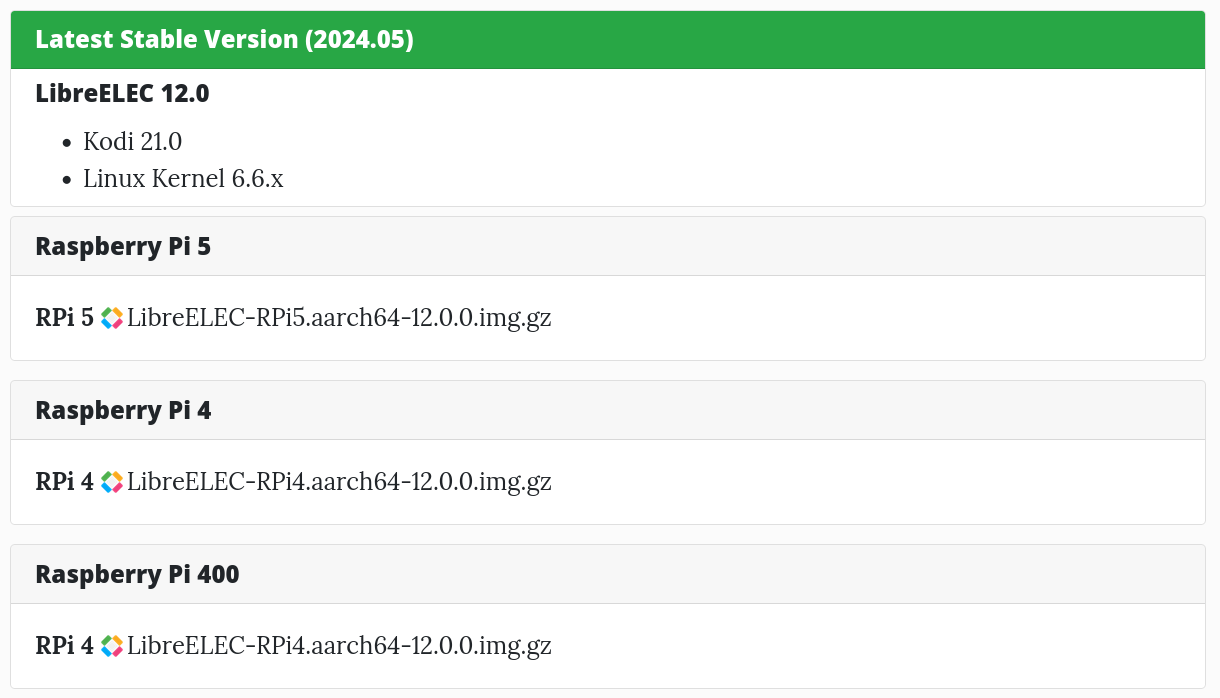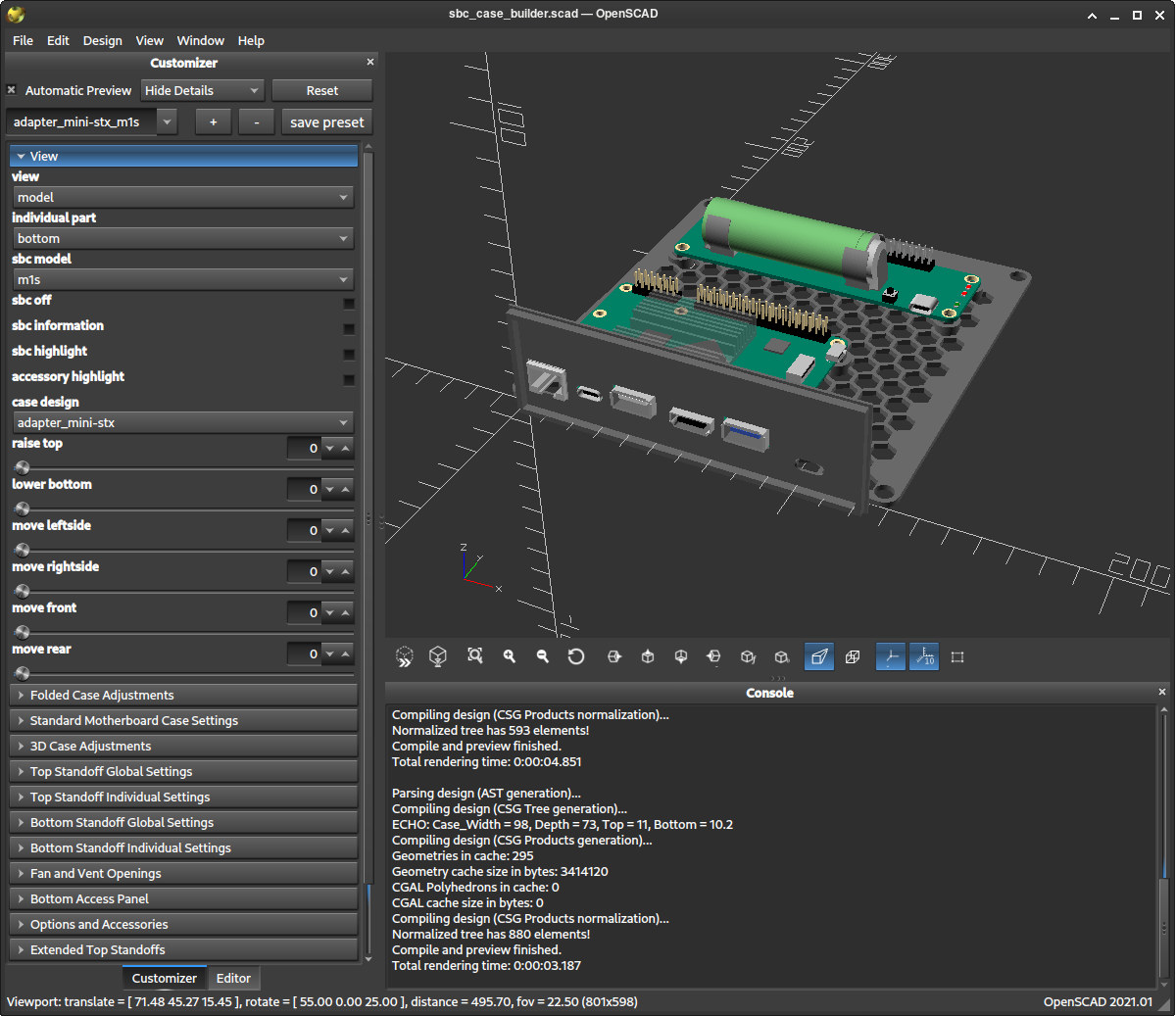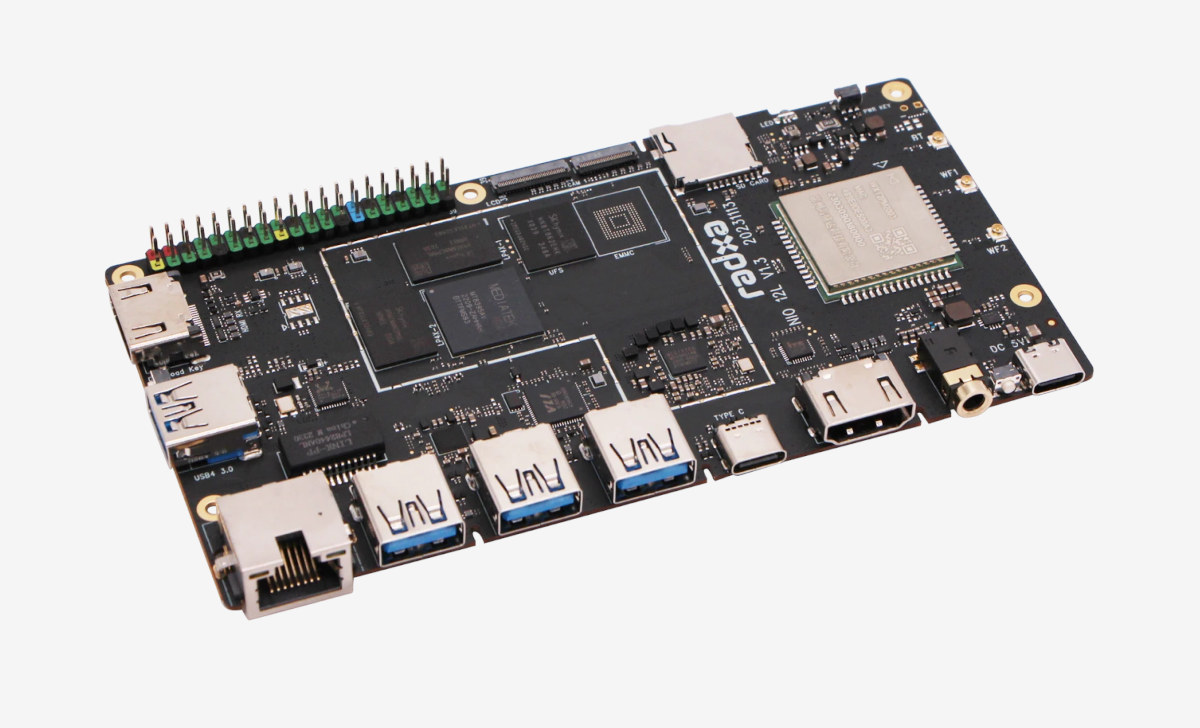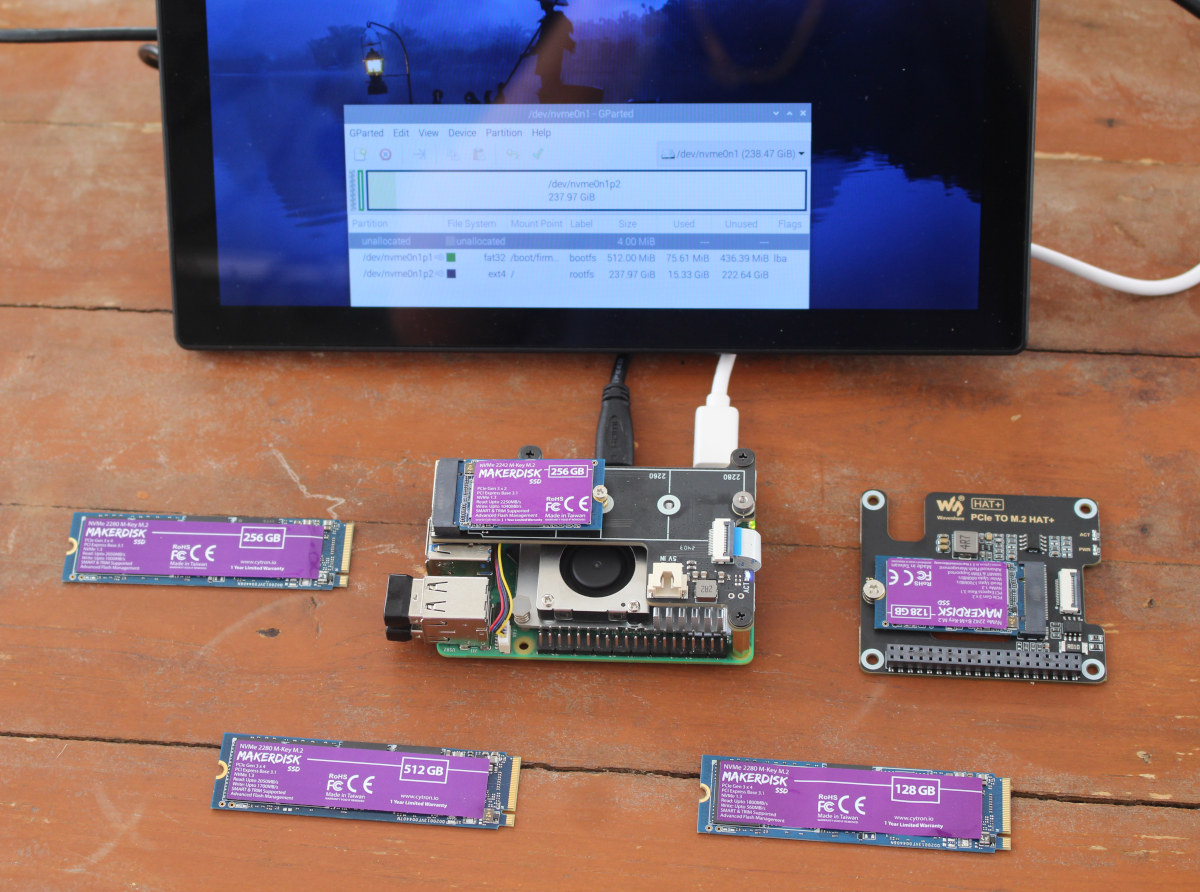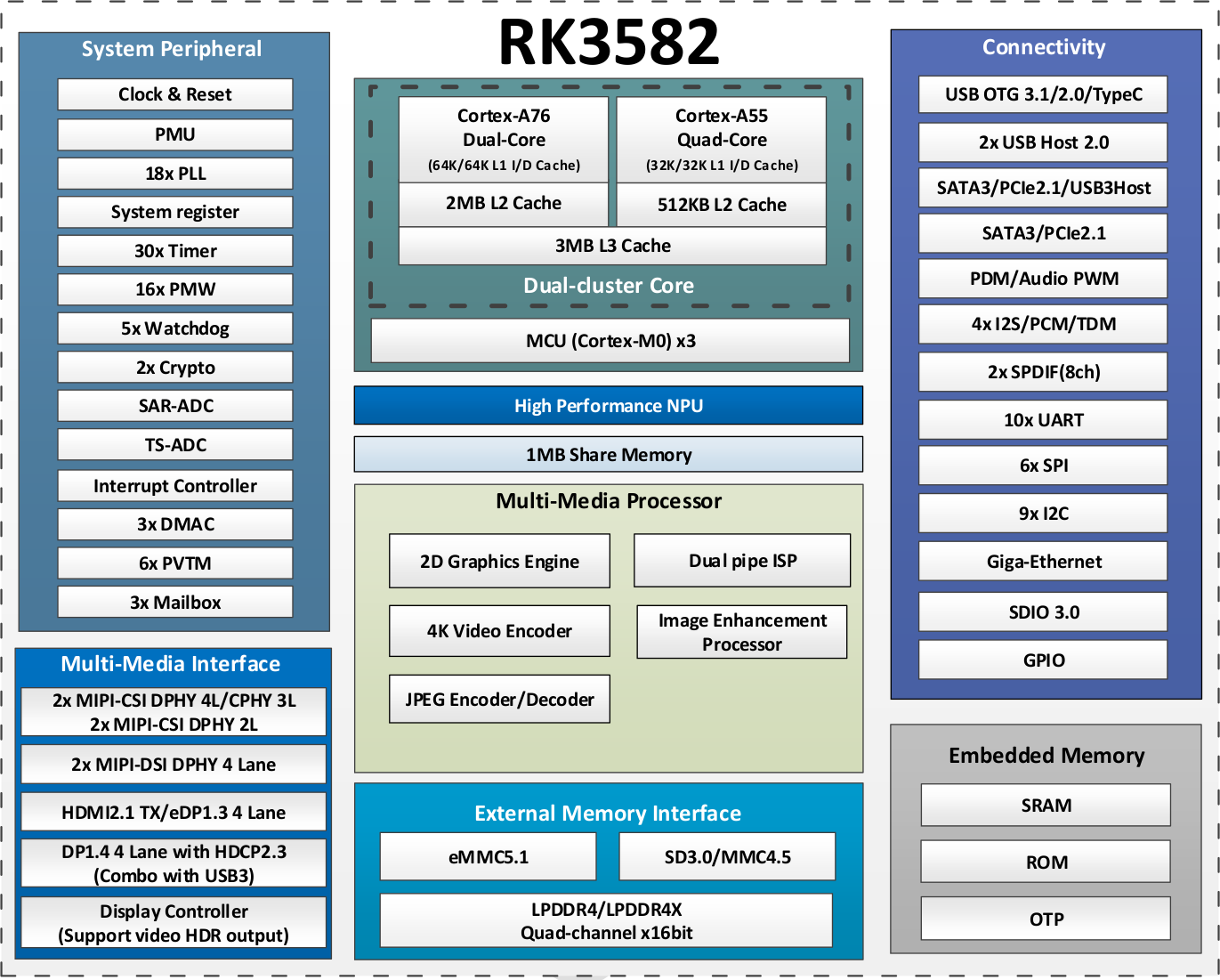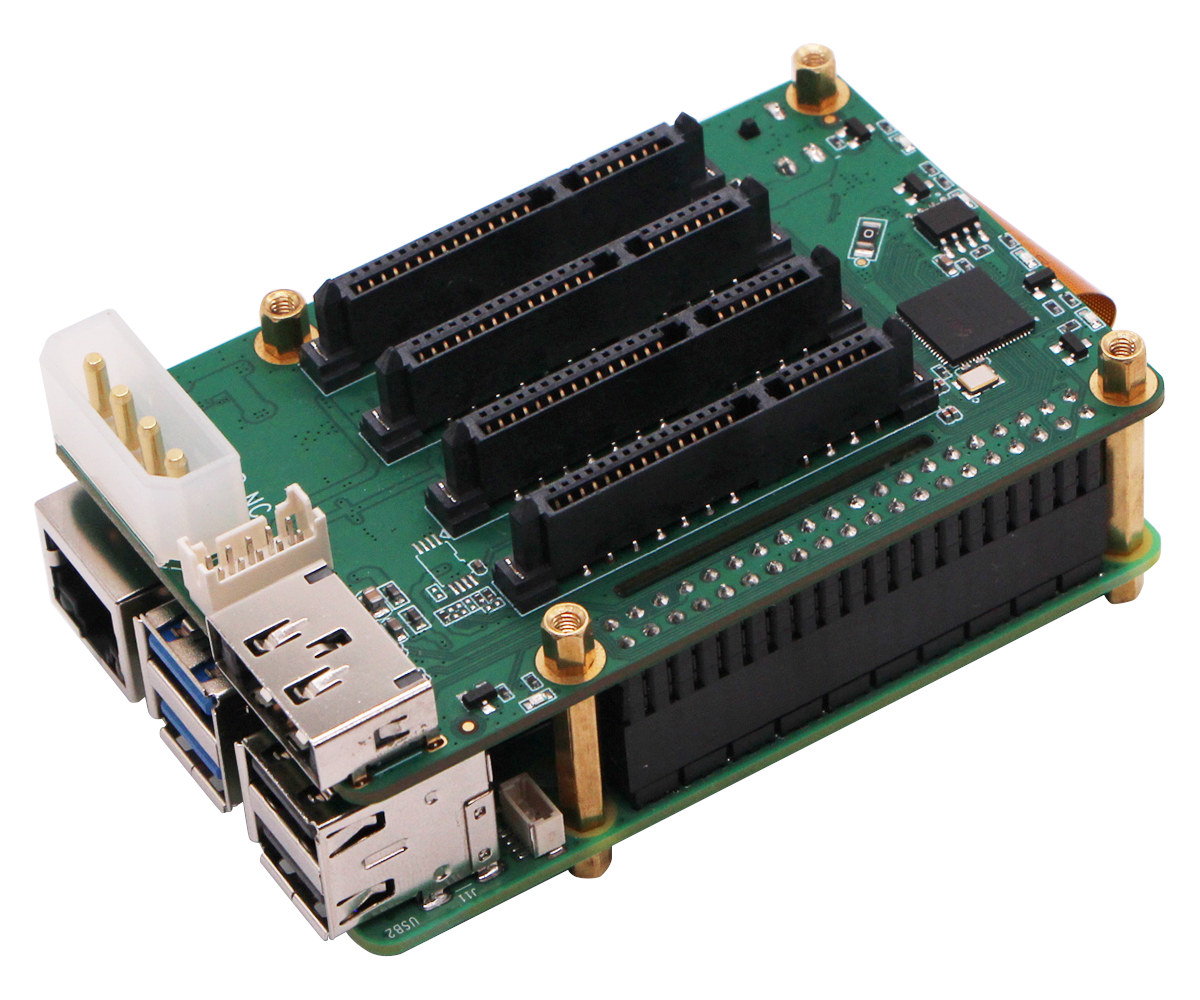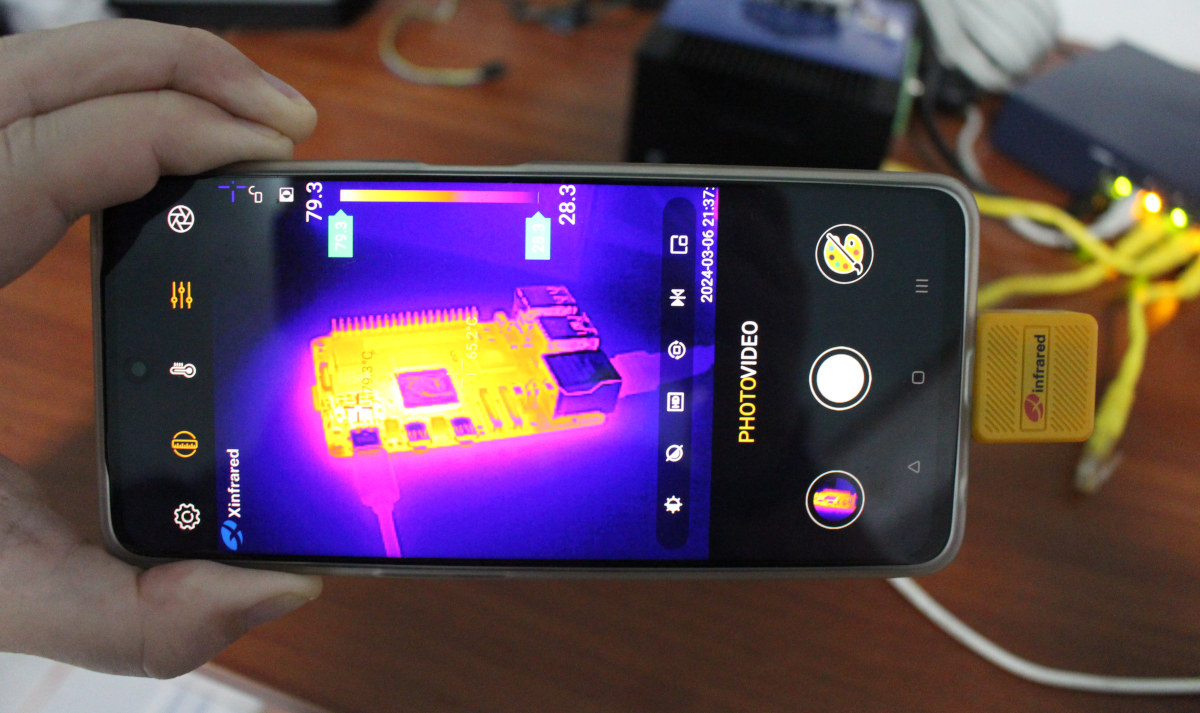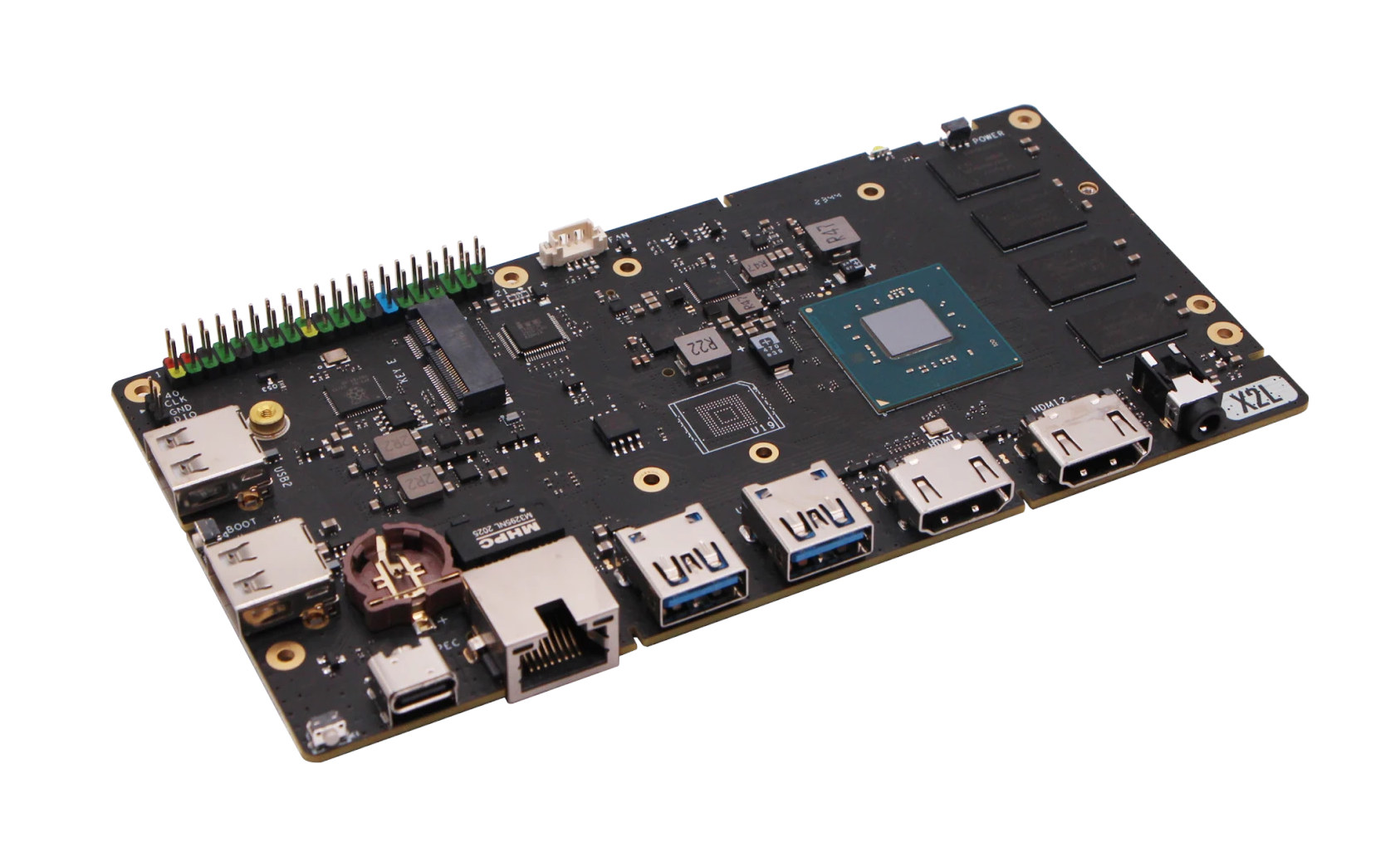As one should have expected after the Kodi 21 “Omega” release last month, the LibreELEC 12 lightweight Linux media center distribution is now out with many devices updated to 64-bit, including the Rasberry Pi 4 and 5 SBCs. LibreELEC 11 was released last year based on Kodi 20 “Nexus” and bringing back support for Amlogic devices. LibreELEC 12 builds on that and benefits from the new features added to Kodi 21 such as FFmpeg 6 and works on Arm platforms based on Allwinner, Amlogic, Broadcom (Raspberry Pi), and Rockchip processors, as well as generic x86 computers. It’s an easy option to create a dedicated HTPC based on a range of hardware with all the features brought by Kodi 21 media center. Since so many platforms are supported there are always some limitations for each and known problems: Raspberry Pi – 50/60fps H.264 HW decoding may need force_turbo=1 or core_freq_min=500 in […]
SBC Case Builder v3.0 can create thousands of cases for popular SBCs and standard motherboards (mini-ITX, Pico-ITX, NUC…)
SBC Case Builder V3.0 case design utility has just been released with the ability to create over 1,000 standard cases – not including customization – for popular SBCs from Raspberry Pi, Hardkernel, Orange Pi, Radxa, and others, as well as standard motherboards following Mini-ITX, Pico-ITX, NUC, Nano-ITX, etc.., and SBC adapters following these standards, meaning you could install a Raspberry Pi 5 into a mini-ITX case if needed. SBC Case Builder started as a command line utility for designing DIY case for SBCs relying on OpenSDAD in April 2022, but Edward Kisiel (hominoids) quickly released version 2 with a GUI in October or the same, and has now further improved the utility with the release of SBC Case Builder v3.0. Version 3.0 comes with many improvements but the main focus was to reuse existing and new PC standard form factor cases by creating SBC adapters and custom I/O Shields since […]
Radxa NIO 12L – A low-profile MediaTek Genio 1200 SBC with Ubuntu certification for at least 5 years of updates
Radxa NIO 12L is a low-profile single board computer (SBC) based on the MediaTek Genio 1200 octa-core Cortex-A78/A55 SoC with a 4 TOPS NPU that got Ubuntu certification with at least 5 years of software update, and up to 10 years for extra payment. The board comes with up to 16GB RAM, 512GB UFS storage, HDMI, USB-C (DisplayPort), and MIPI DSI video interfaces, a 4K-capable HDMI input port, two MIPI CSI camera interfaces, gigabit Ethernet and WiFi 6 connectivity, five USB ports, and a 40-pin GPIO header for expansion. Radxa NIO 12L specifications: SoC – Mediatek Genio 1200 (MT8395) CPU Quad-core Arm Cortex-A78 @ up to 2.2 to 2.4GHz Quad-core Arm Cortex-A55 @ up to 2.0GHz GPU Arm Mali-G57 MC5 GPU with support for OpenGL ES1.1, ES2.0, and ES3.2, OpenCL 1.1, 1.2 and 2.2, Vulkan 1.1 and 1.2 2D image acceleration module APU – Dual‑core AI Processor Unit (APU) Cadence […]
Testing Cytron MAKERDISK M.2 NVMe SSDs on Raspberry Pi 5 with GEEKWORM X1001 and Waveshare M.2 PCIe HAT+
Cytron has sent us a few of their MAKERDISK NVMe SSDs preloaded with Raspberry Pi OS so that we can test them on a Raspberry Pi 5 SBC, either with a GEEKWORM X1001 or Waveshare M.2 PCIe HAT+ add-on boards both of which were also provided by the company. Ever since the first M.2 PCIe HATs for the Raspberry Pi 5 were released, we knew Raspberry Pi Limited was working on its own model, and based on some Twitter/X “rumors” (with photos) the launch of the official M.2 HAT+ should be just around the corner. So it’s the perfect timing to test some SSDs on the Raspberry Pi 5 even though I’ve yet to get the official HAT+ Cytron “MAKERDISK” package unboxing The Malaysian company sent me a kit with everything I needed to get started, minus the Raspberry Pi 5 I already owned. This includes 128GB or 256GB NVMe […]
Rockchip RK3582 is a cost-down version of RK3588S with two Cortex-A76 cores, four Cortex-A55 cores, no GPU
Rockchip RK3582 hexa-core SoC is pin-to-pin compatible with the popular Rockchip RK3588S octa-core Cortex-A76/A55 SoC, but only features two Cortex-A76 cores, a 5 TOPS NPU (instead of 6 TOPS) and does not come with a 3D GPU. I was first made aware of the Rockchip RK3582 in October 2023 when I was sent a photo of a board allegedly for a TV box, but while the RK3582 still features a 4K video decoder, the lack of a 3D GPU could make it problematic with 3D accelerated user interface. We now have more details with Radxa having released the datasheet and a few more interesting details. Rockchip RK3582 specifications: Hexa-core CPU – 2x Cortex-A76 and 4x Cortex-A55 cores in dynamIQ configuration (frequencies are still shown as TBD in the datasheet) GPU No 3D GPU 2D graphics engine up to 8192×8192 source, 4096×4096 destination AI Accelerator – 5 TOPS NPU 3.0 (Neural […]
Radxa Penta SATA HAT adds up to five SATA drives to the Raspberry Pi 5 for NAS applications
The Radxa Penta SATA HAT leverages the PCIe interface on Raspberry Pi 5 SBC to add up to five 2.5-inch or 3.5-inch SATA drives through four SATA connectors and an eSATA connector and enables NAS designs with the latest SBC from Raspberry Pi Limited. The Radxa’s Penta SATA HAT was initially launched in 2019 as an accessory for the Rock Pi 4 SBC powered by a Rockchip RK3399 processor and an M.2 PCIe socket since Raspberry Pi competitors have been exposing PCIe interfaces for years. It turns out the exact same Penta SATA HAT design can be reused with the Raspberry Pi 5 by providing a new PCIe FPC cable and updating the configuration scripts. Radxa Penta SATA HAT for Raspberry Pi 5 specifications: 4x SATA interfaces + 1x eSATAp for up 100TB storage via 5x 2.5″ or 3.5″ HDD/SSD Host Connection – Flat cable with 2-lane PCIe 2.1 via […]
Xtherm II TS2+ review – A 256×192 thermal imager tested with an Android smartphone
Shortly after I wrote about the Mustool MT13S 2-in-1 thermal imager and multimeter, Xinfrared asked me if I wanted to review the Xtherm II TS2+ thermal imager for smartphones. They offer versions that work for Android or iOS smartphones, so the company sent me the Android version of the Xtherm II TS2+ for review. After listing the key features and specifications, I’ll go through an unboxing, and report my experience using the thermal imager with the OPPO A98 5G smartphone running Android 14. Xtherm II TS2+ specifications Minimum focus – 8mm Resolution – 256×192 Pixel Pitch – 12μm FOV – 44.9° x 33.4° Image Frame Rate – 25Hz NETD (Noise Equivalent Temperature Difference) – ≤40mK@25°C, F#1.0 MRTD (Minimum Resolvable Temperature Difference) – ≤500mK@25°C,F#1.0 Temperature Range Measurements- -20°C ~ +450°C with ±2°C or ±2% reading accuracy Operating – -20°C ~ +50°C Temperature Correction – Manual/automatic Power Consumption – <350mW Dimensions – […]
Radxa X2L Intel Celeron J4125 SBC goes for as low as $39
Radxa X2L is an inexpensive Intel Celeron J4125 Gemini Lake Refresh single board computer (SBC) that ships with 2GB to 8GB RAM, an M.2 socket for SSD storage, another M.2 socket for a wireless module, and offers a range of ports such as dual HDMI, gigabit Ethernet, four USB port, and a 40-pin GPIO header. The price starts at $39, a price point that reminds me of the Atomic Pi SBC introduced a few years ago with an Atom X5 Cherry Trail processor, but the Radxa X2L is easier to use, offers better performance and modern features, as well as a low-profile form factor that’s about the size of a smartphone, just a bit thicker. Radxa X2L specifications: SoC – Intel Celeron J4125 quad-core Gemini Lake Refresh processor @ 2.0 / 2.7 GHz (Turbo) with Intel UHD Graphics 600 @ 250/750 MHz; 10W TDP MCU – Raspberry Pi RP2040 microcontroller […]


